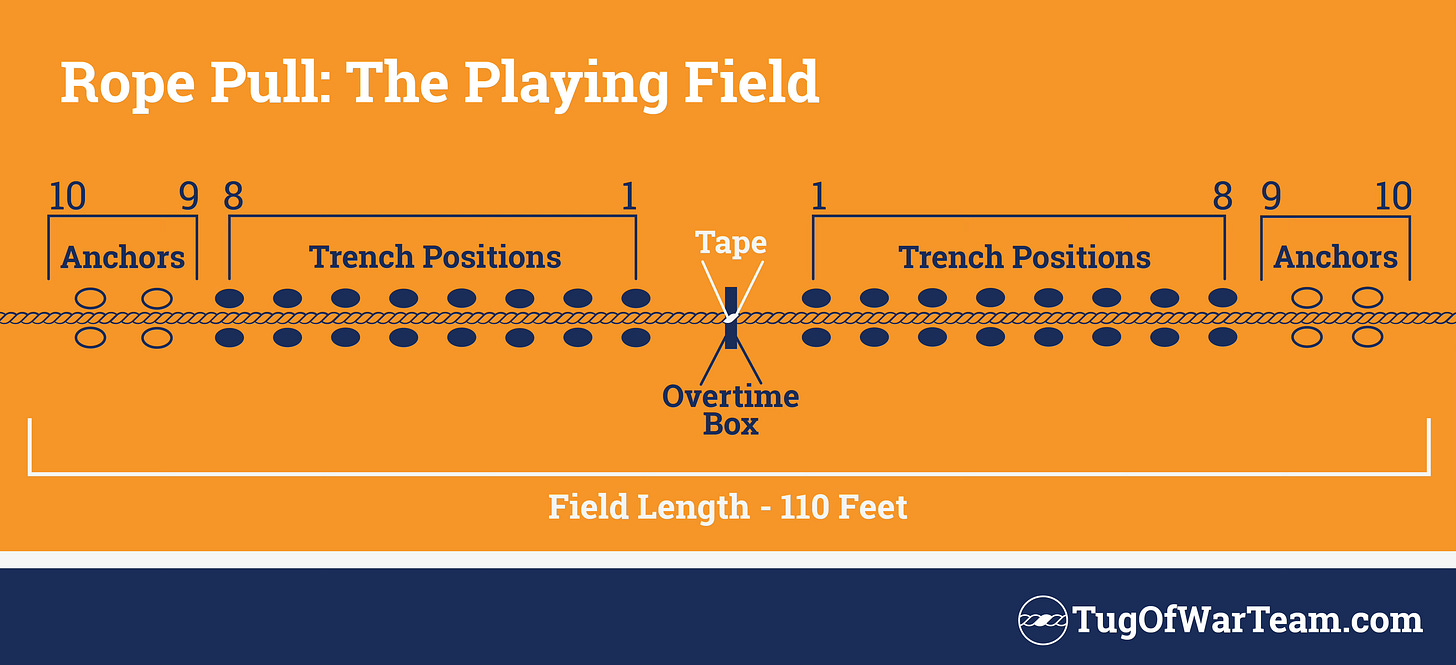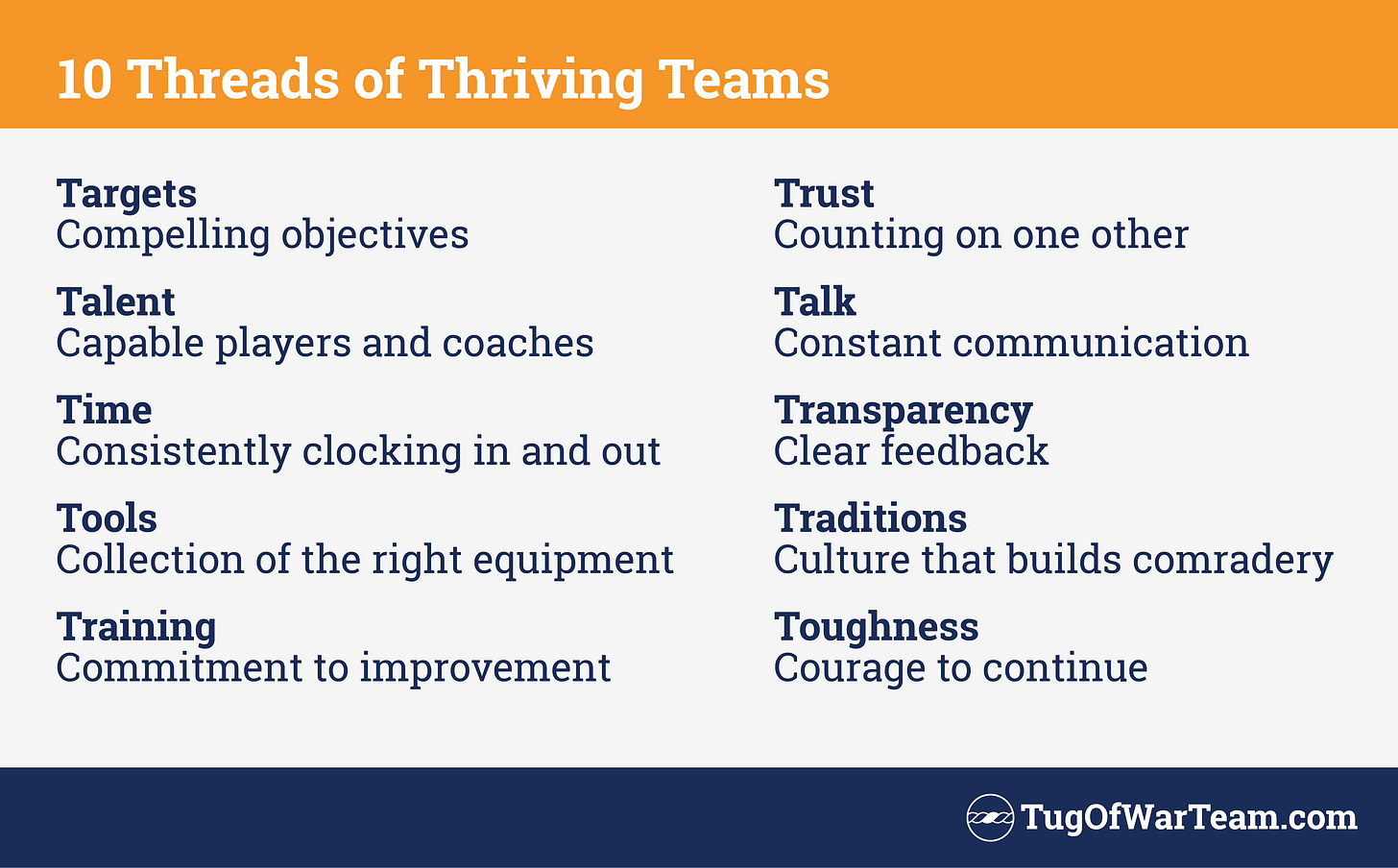10 Threads of Thriving Teams
How a legendary tug-of-war competition can inspire us to pull together.

There's an unusual competition at my college alma mater that has been going on for decades. It's a homecoming tradition called Rope Pull. I often start explaining Rope Pull to others by comparing it to a game of tug of war. But over the years, Rope Pull has evolved into a rare spectacle of sport in which young students have risked life and limb to claim victory.
Since I suck at playing sports, you might guess that I have no interest in them. On the contrary, I'm fascinated by sports. Specifically, team sports. What intrigues me the most is what you can learn about teamwork from both watching and participating in these competitions.
Rope Pull: A Quick Overview
So, what makes Rope Pull different from a typical tug of war? For starters, how many tug-of-war teams do you know that practice all year round? How many tug-of-war games rival the on-campus popularity a college homecoming football game? Or, could you imagine a team's tugging practice includes pulling against a Ford F-250.
Unless you attended the University of Tennessee at Martin or lived in the far northwest corner of the Volunteer State, it's likely that you've never heard of Rope Pull until now. From what I can tell, tug-of-war competitions like the one at UT Martin (aka UTM) are rarely this tough and serious. Hope College in Holland, Michigan has a similar game called The Pull that's been a tradition since 1989. Though the number of teams, players, and rules are different at Hope College, the level of fanfare and athletic intensity are the same at UTM. At Northern Illinois University, their event is called Tugs. Their game features a similar team structure to the one held at UTM, though players in Illinois have the luxury of using gloves and sturdy wooden footholds.
Rope Pull at UTM has a women’s bracket and a men’s bracket. Eight players pull from a reclined position on the ground with their feet dug into 8-inch deep foot holds, and two anchors hold tension on the end of the rope. A win is declared when a team’s first position player has touched the rope’s center tape or if a team has pulled the center tape into their territory by the end of the match.
The game is brutal on a player’s legs, back, sides, and feet, but the real pain is felt in your hands. Gloves aren’t allowed, so your grip on the rope is constantly slipping because of sweat and tension. Blisters are almost guaranteed, but typically your hands have already been calloused from the weeks (or months) of practices for the tournament.
Lessons on Teamwork
Great teamwork in a Rope Pull match isn't much different than great teamwork in the office.
Sports analogies, terminology, and stories, when applied appropriately, can provide easy-to-understand illustrations and lessons on what's needed to build healthy organizational culture. For instance, I find that the word “Coach” is a more inspiring and aspirational term than the word “Boss” - both as a noun and a verb. Nobody likes being bossed around, but being coached carries a different connotation. Coaches, by definition, help players and teams win, but a Boss is often thought to value their own goals ahead of others. Wouldn’t you rather work for Coach than a Boss?
The students who tug their hearts out in Rope Pull each fall receive literal hands-on lessons in teamwork, and spectators like me can watch the competition to see how winning teams function. I've been a member of many workplace teams throughout my 20-year career as both player and player-coach. I've worked in for-profit, non-profit and public agency, and I've found that winning teams on the field and in the office have similar traits.
Strive to Thrive
A rope gains its strength from a collection of threads tightly bound together. Similarly, high-performing teams are connected and committed to shared values. These 10 Threads of Thriving Teams, when working in tandem, make it possible for groups at work or at play to achieve greatness.
In this series, I'll take a closer look at Rope Pull to see what we can learn about these 10 Threads of Thriving Teams.
Whether you’re a player, coach, or a player-coach, this series is designed to inspire you to identify the traits of your teams and equip you with ideas to improve the teams you’re in.
I'll weave in stories from my former teams and workplaces, including zoos, theme parks, a public transit agency. My hope is that sharing my wins and losses in teamwork will help illustrate how each player on the team plays a role in team health.
Looking Ahead
In my next article, I’ll explain how Rope Pull’s clear TARGET (Thread #1) unifies the team’s energy. Plus, did you catch that I used to work in a zoo?? I’ll also explore how compelling objectives are as vital to teams in the animal kingdom as they are on the playing field or in the office.





